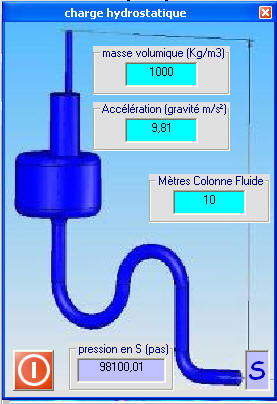The height of a column of fluid generates a pressure at its base.
Fluid height (in meters) x density of the fluid (kg/m3) x gravity (9.81) = hydrostatic pressure (in Pascals)
1 meter of water density 1000Kg/m3 =9810 pascals (Newtons/m²)
This pressure is called hydrostatic pressure when to pump and raise the water column.For sucking a liquid in a duct is created a depression, If the pressure drop of the liquid falls below its saturation vapor pressure,the liquid begins to boil. (Steam production) This phenomenon is called cavitation.This vacuum vaporizing water is achieved when a column of water is sucked, around 10 meters in height, Water vaporizes and releases steam which fills the depression, it is thus impossible to pump more than 8-10 meters deep, by aspirating. It is therefore necessary to pump the fluid outlet and place the pump in the bottom of the well ... see cavitation
Pressure losses (head loss) are often expressed in meters column of fluid:
hydrostatic head interface mecaflux
